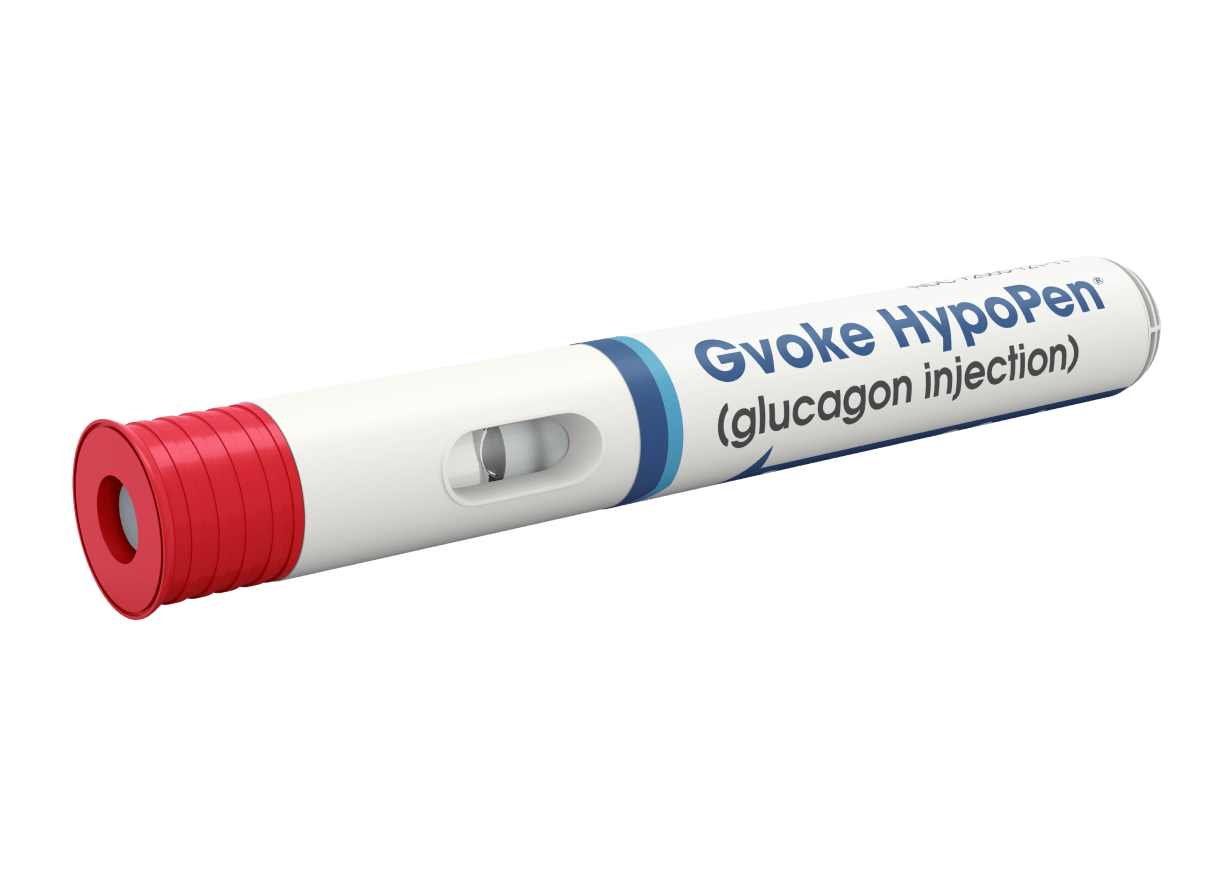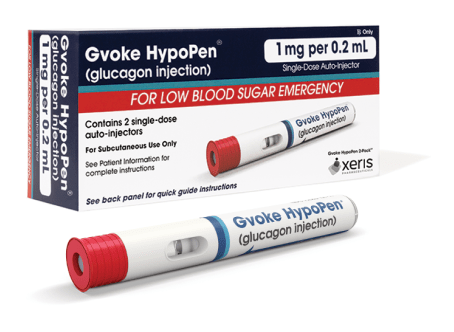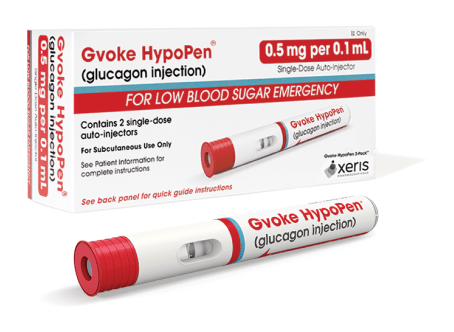Discover an Essential Tool for Your Diabetes Toolkit

Why Do You Need Gvoke HypoPen?
During a severe low blood sugar event, you need a safety net for when it matters most
Managing blood sugar levels is challenging, no matter how dedicated you are to your treatment plan. Low blood sugar emergencies can happen unexpectedly and they demand quick action. That’s why it’s important for you and your loved ones to be ready to confidently treat severe low blood sugar.

Meet Gvoke HypoPen
Gvoke HypoPen is the ready-to-use rescue pen anyone can administer1 with confidence
- Ready-to-Use Premixed and ready-to-go at a moment’s notice.3
- Simple to Administer Anyone can administer in 2 simple steps1,2,5 including you — in certain situations.
- Proven to Work Brings very low blood sugar back up quickly and safely.3†
Understanding Dosages
Gvoke HypoPen comes in two premeasured dosing options3

1 mg per 0.2 mL
- For patients ages 12 and older, or children under 12 years old who weigh ≥ 100 lbs
- Lasts 30 months from date of manufacture when stored at room temperature4

0.5 mg per 0.1 mL
- For patients ages 2 to 11 who weigh < 100 lbs
- Lasts 24 months from date of manufacture when stored at room temperature4
Proven safe
In clinical trials, most side effects were mild.4*
The most common side effects in adults were3:
- Nausea(30%)
- Vomiting (16%)
- Swelling at the injection site (7%)
- Headache (5%)
The most common side effects in children were3:
- Nausea (45%)
- Hypoglycemia (39%)
- Vomiting (19%)
- Headache (7%)
- Hyperglycemia (7%)
- Abdominal pain (3%)
- Injection site discomfort (3%)
- Injection site reaction (3%)
- Urticaria (hives) (3%)
*Mild side effects are those that do not interfere with your normal day-to-day functioning.

Know When To Use Gvoke HypoPen
Severe low blood sugar requires immediate attention. Gvoke HypoPen should be used if you experience any of the following during a low blood sugar emergency2:
- Correcting with food or drink isn’t working
- You are unable to swallow safely
- You feel like passing out
- You pass out or have a seizure

Where People Keep Gvoke HypoPen
Gvoke HypoPen comes in a convenient two-pack. You should have it available at all times no matter where you are. Store Gvoke HypoPen at room temperature (68°F to 77°F).3 Do not refrigerate or freeze.
Home
Keep Gvoke HypoPen in an easy-to-access location where you live (e.g. nightstand).
School or work
Ensure you have Gvoke HypoPen available to treat a severe low at school or the office.
On the go
Gvoke HypoPen is easy to travel with because it doesn’t need to be refrigerated.
†In two clinical studies in adults, blood sugar levels that were less than 50 mg/dL increased to above 70 mg/dL or increased by at least 20 mg/dL within 13.8 minutes on average.
REFERENCES:
- Valentine V, Newswanger B, Prestrelski S, Andre AD, Garibaldi M. Human factors usability and validation studies of a glucagon autoinjector in a simulated severe hypoglycemia rescue situation. Diabetes Technol Ther. 2019;21(9):522-530
- Gvoke HypoPen [instructions for use]. Chicago, IL: Xeris Pharmaceuticals, Inc.
- Gvoke [prescribing information]. Chicago, IL: Xeris Pharmaceuticals, Inc.
- Data on file. Xeris Pharmaceuticals, Inc.
- Meyer JM, Devona MC. U.S. Survey investigating gaps between patients and specialists in the treatment of severe hypoglycemia and impressions of the ease-of-use of liquid-stable glucagon for subcutaneous injection. Int Arch Endocrinol Clin Res. 2021;7(1):025. doi:10.23937/2572-407X.1510025
Indication
GVOKE (glucagon) is a prescription medicine used to treat very low blood sugar in adults and children ages 2 years and above with diabetes.
Important Safety Information
- Do not use GVOKE if you:
-
- Have a tumor in the gland on top of your kidneys, called a pheochromocytoma because of the risk of a substantial increase in blood pressure
- Have a tumor in your pancreas called an insulinoma because of the risk of low blood sugar
- Are allergic to glucagon or any inactive ingredient in GVOKE. Stop using GVOKE and seek immediate medical attention if you experience any symptoms of a serious allergic reaction such as rash, difficulty breathing, or low blood pressure
- Before using GVOKE, tell your doctor about all the medicines you take and your medical conditions, including if you have not had food or water for a long time (prolonged fasting or starvation), have low blood sugar that does not go away (chronic hypoglycemia), or have a history of a skin rash called necrolytic migratory erythema (commonly associated with glucagon-producing tumors)
- The most common side effects reported in adults are nausea, vomiting, swelling at the injection site, and headache
- The most common side effects reported in children are nausea, low blood sugar, vomiting, headache, abdominal pain, high blood sugar, pain or redness at injection site, and hives
- Inform caregivers on the Instructions for Use of GVOKE, and symptoms of severe hypoglycemia, which include unconsciousness and seizures or convulsions
- Store in original container until time of use, and at room temperature between 68°F to 77°F (20° C to 25° C)
- You are encouraged to report side effects of prescription drugs to the FDA. Visit http://www.fda.gov/medwatch or call 1-800-FDA-1088
Please talk to your doctor and see full Prescribing Information and Patient Information Guide for GVOKE.